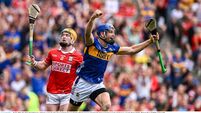Five things we’ve learned from the league
I’ve lost count of the number of changes in the format for the Allianz hurling league in the past 20 years. The format is continually tweaked once any opposition is raised, but this has been the most interesting and exciting Division 1A for years.
Whether by accident or design, the decision to limit the top tier to six teams has been a winner.












